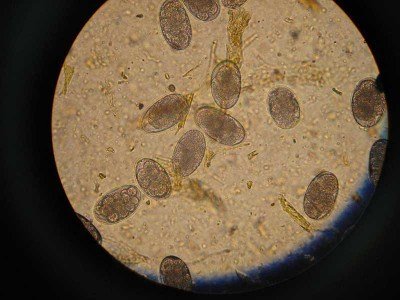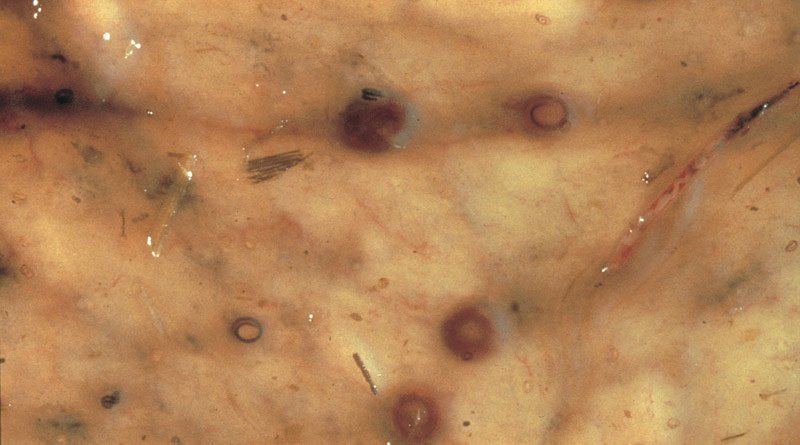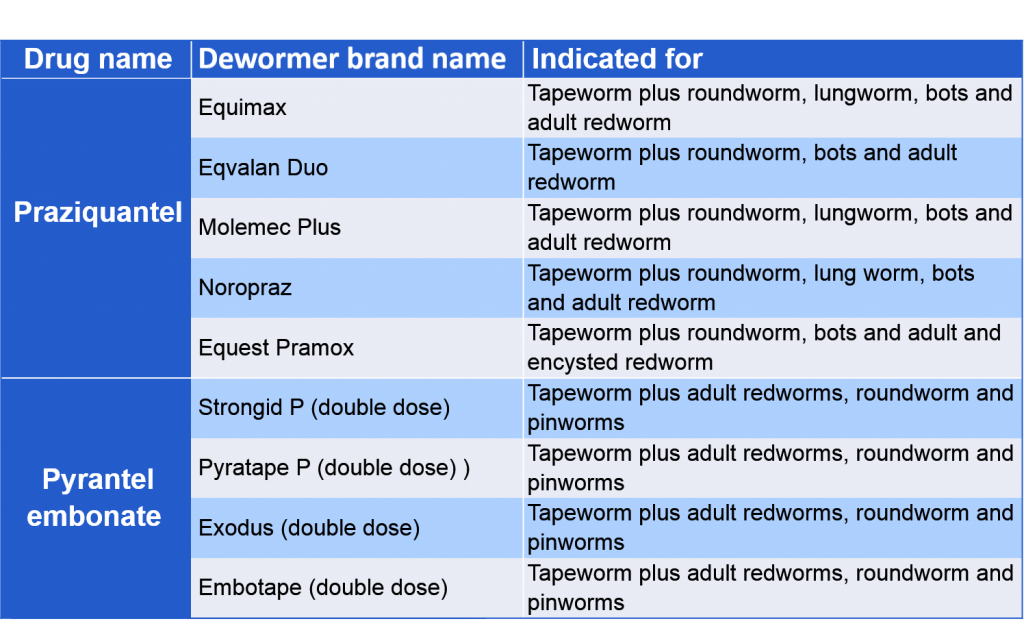
REDWORM

ENCYSTED SMALL REDWORM

TAPEWORM
Find out how easy it is to do a worm egg count and run an efficient worming programme using only the wormers your horse really needs.
What is a worm count?
A worm count is really a worm egg count (also known as a faecal egg count). A small sample of horse manure (about a desert spoon full) is prepared and mixed into a solution of Zinc Sulphate examined under the microscope to find out how many worm eggs are present. You cannot see them with the naked eye. We test each sample twice to determine the egg count.
By using this method to measure your horses worm burden. It might be the case that he may not have worms at all. He may have many more than expected. Use the results to devise your worming program. A worm count will allow you to treat your horse’s worm control in a knowledgeable way.

What Next?
Whatever worming programme you follow a worm count should be a vital part of your approach, here’s how:
Here we answer some of your common questions.
Why should I use worm egg counts in my worming programme?
If you are using a full programme you can make sure it is effective. In many cases you will be able to replace some wormer doses with counts, cutting down on the amount of chemicals going into your horse and out onto the pasture. You can target the correct wormers at the horse who needs them instead of wasting and guessing the doses on horses that may not need worming in the first place.
I’ve heard that worm egg counts don’t show all the worms though?
That is quite correct. Nevertheless a worm count is still a very useful tool. Encysted stages of redworm are not mature so don’t lay the eggs which are counted in the manure sample. It is important to treat with an effective product in the winter months then you can rely on your worm count results over the next season. Tapeworm eggs often appear in dung samples but a worm egg count is not reliable for detecting tapeworm.
I’m unsure whether to give up regular worming, I’d rather be safe than sorry.
Following a complicated and expensive worming programme does not guarantee that your horse will be free of worms. We test many horses that have been on worming programmes and still have medium or high worm count results. Increased resistance to some wormers means that they may not be effective for your horse. This can only get poorer in years to come and there are no new worming drugs. Regular worm counts can establish parasite problems, sometimes only affecting one horse in a herd, so they can be accurately treated.
Isn’t it complicated to do?
Not at all! We provide a step by step guide that will make it easy to follow!
More and more people are using this system for health and economical reasons!
Is it expensive?
This is an important question. The main aim of using a worm count programme is to have a healthier horse with a well managed worming regime but one of the other benefits is that it is usually a cheaper option. Most people save money on worming by using a targeted programme. When you first start there may be a period when you need to both count and give a wormer for instance when a horse proves to have a parasite problem. Using tests means that the problem is recognised and treated accordingly.
Results…
We aim to test the manure samples on the day they arrive and your results can be sent by via email within 48 hours.
What does my result mean?
For each horse on the result sheet there will be a number indicating the level of worm eggs found. The sign < means ‘less than’, so a result of <50 epg means that we could find no trace of worm eggs when the sample was tested. (epg means ‘eggs per gram’). If you are following a reduced worming programme you will not need to worm at this levelIt is very common for a result to come back as <50 epg no eggs seen.
If the count is less than 250 epg then it is a LOW count and your worming measures are working. If you are following a reduced worming plan you may still want to delay the next dose at this level.
If the count is between 250 epg and 1200 epg it is a MEDIUM count and the horse needs worming.
Which worms are covered by the test?
If the count is more than 1200 epg it is a HIGH count, the horse needs worming and the worming programme needs attention.
Usually your result will say STRONGYLE EGGS. This is redworm, the most common parasite that affects horses.
We may find TAPEWORM EGGS, though these don’t always show on a count. Your horse could still have tapeworm even if no eggs are seen. We may find ASCARIDS. This is roundworm, usually only a problem in foals and previously neglected horses.
WORMING TO CLEAR ENCYSTED SMALL REDWORM
It is important you consider the seasonal worming challenges when formulating your worm control plan.
Every horse should be treated for encysted small redworm in late autumn or winter. Make sure you time it right!
SELECT THE RIGHT WORMER
Remember to select the most appropriate wormer for the parasites you are targeting. Currently, only two active ingredients specifically target encysted small redworm


HORSE WEIGHT
Use a weigh tape or weigh scales to determine the weight of your horse. Horses should be dosed accurately, according to their weight. This is important because under-dosing can increase the risk of resistance development.
YOU CAN NEVER BE SURE OF A NEW HORSE’S WORM BURDEN
If their history is unknown they should be quarantined, FWEC tested on arrival at the yard and treated for encysted small redworm and tapeworm. They should then be stabled for at least 48 hours to avoid bringing resistant worms onto your premises.
